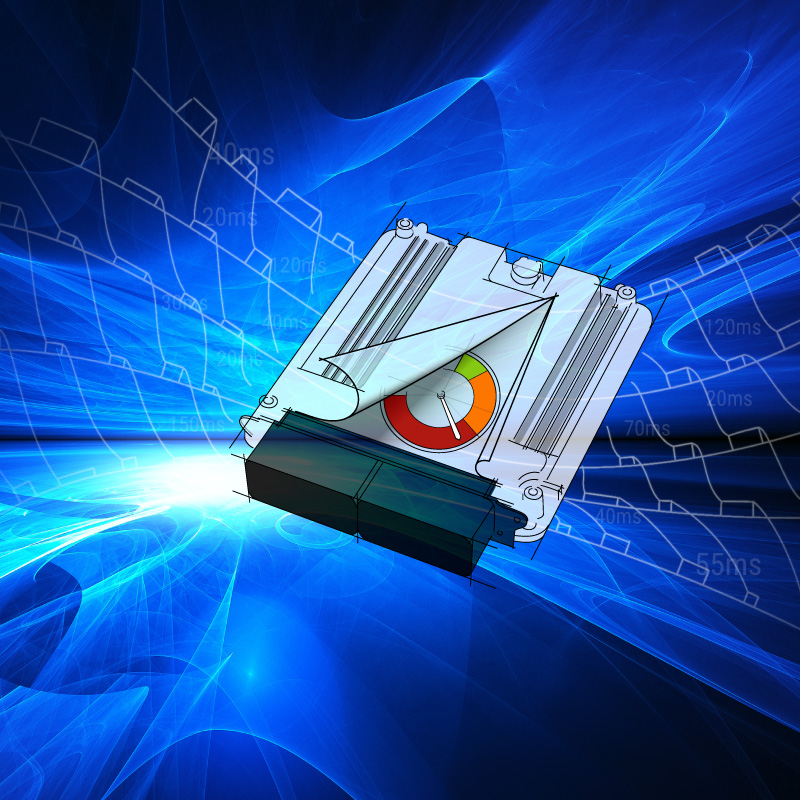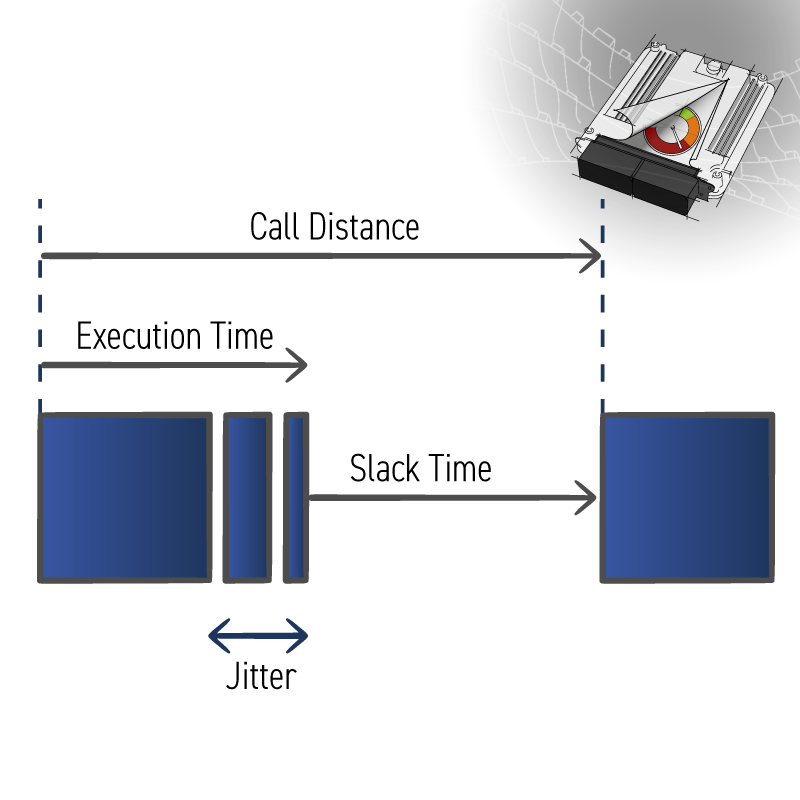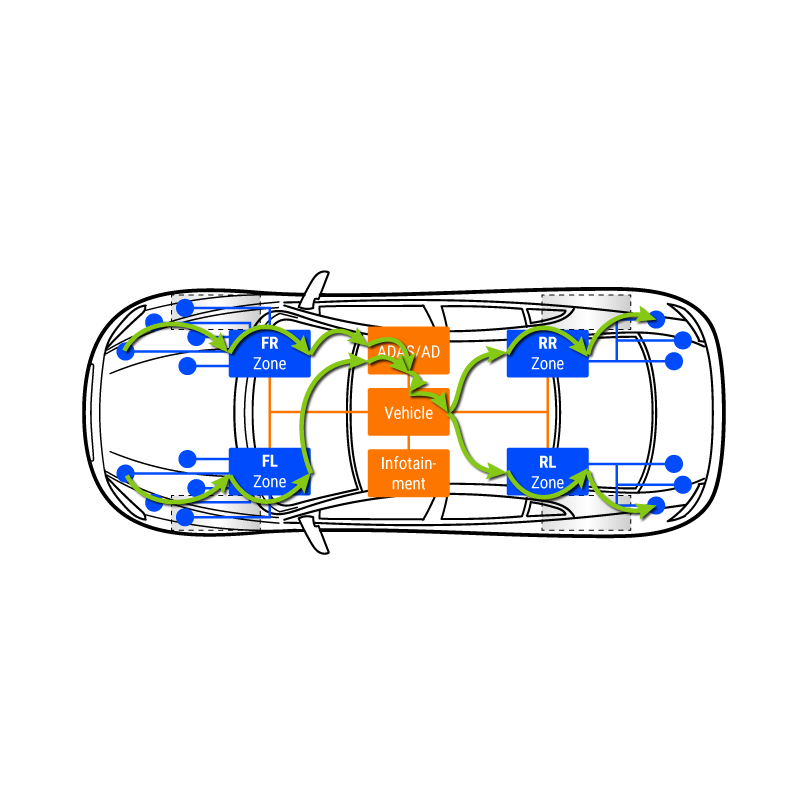Monitor your
ECU Performance
Receive regular reports on your ECU’s performance, highlighting edge-case timing issues. Immediate resolution avoids time-sapping integration delays and task forces in the weeks before SoP.
For testers, integrators, and project managers.
ECU Performance Monitoring:
We would be happy to send you further information.
ECU Performance Monitoring
Our ECU Performance Monitoring service involves in-depth monitoring and analysis that supports OEMs and Tier-1s as you develop your Electronic Control Unit (ECU) projects, from classic implementations to state-of-the-art zonal architectures.
INCHRON’s expert team assists in capturing, processing, and interpreting hardware trace data to ensure optimal performance and reliability of automotive software and systems. This starts during the implementation phase, continues during the integration phase, and ends with the completion of the project’s testing phase.
During our collaboration, INCHRON’s experts provide solutions to common pain points relating to resource constraints and other real-time issues based on the results of regular analysis of trace data. This ensures that performance issues are flagged and resolved immediately, and that your team is aware of any trends that could lead to such problems.
USE CASE
AUTOSAR – From Body Control and Brakes to Chassis and Steering
USE CASE
Tackling Typical Timing-Related Problems
USE CASE
Studying Software Issues Through the Lens of Event Chains
USE CASE
Dealing With Requirements for Dynamic Architectures

AUTOSAR – From Body Control to Brakes, From Chassis to Steering
AUTOSAR continues to play a significant role in automotive applications. Regardless of whether you’re developing a body control ECU or involved in software development for chassis, braking, or steering, you’ll have noticed that software complexity has grown over the years.
The demand for more functionality results in more algorithms to handle all the associated tasks and features. But, at some point, you’ll find that there is simply too much going on for everything to operate reliably.
INCHRON’s ECU Performance Monitoring service helps your team highlight worrying trends in timing, enabling you to respond promptly. Early reassignment of a task to a different core or optimization of an interrupt routine often saves many headaches at task force meetings later during system integration.

Tackling Typical Timing-Related Problems
Automotive ECU development teams typically keep an eye on core loads to ensure there are always enough cycles to execute the code, regardless of what else is happening. But it’s not an exact science.
The problem is, watching core load is like monitoring a pan of boiling water to determine if a single grain of rice is cooked. What’s needed is a way of monitoring each grain of rice.
INCHRON’s services and tools statistically monitor multiple timing parameters for interrupt routines, runnables, and tasks. If it looks like execution time, slack time, or jitter is getting worse with each project build, you’ll see the issue and be able to address it immediately.

USE CASE: Studying Software Issues Through the Lens of Event Chains
The path between an automotive sensor and the related actuator can be described using event chains. Every interrupt, processing block, and even paths across networks can be considered in terms of the time taken to complete their specific task. Not only this, minimum and maximum times can also be defined, allowing for variations between little and significant load.
Most customer functions can be modeled using between two and ten event chains. For a simple ECU, this can rise to 20. And, looking at the entire vehicle, we’ve counted as many as 2,000 event chains. INCHRON helps you define, monitor, and optimize each one so that your automotive ECU operates without issue under all driving conditions.

Dealing With Requirements for Dynamic Architectures
With the advent of software defined vehicles (SDV), some of the software deployed in today’s vehicles will be replaced with upgraded versions in the years ahead. But how can you be sure that the system architecture you’ve chosen will be able to accommodate such changes?
This is the challenge posed by dynamic software architectures. The key lies in understanding the system’s timing behavior to such a level that it is clear how much headroom remains, and how changes to other blocks of unrelated code will impact the system.
INCHRON can help ensure timing concepts are embedded in your automotive software development projects from day one, regardless of where in the supply chain the code is developed.
Identify issues early — reduce costs
Early Detection of Performance Bottlenecks:
Consistent and meaningful timing measurements are regularly compared to key performance indicators (KPIs) for all relevant software functions.
Identification of Problematic Timing Trends:
Variances in standard metrics are used for early identification of problematic trends using any common trace format. Metrics include execution, response, and slack time, jitter, and CPU utilization.
Enhanced Safety and Reliability:
A comprehensive understanding of timing and performance metrics helps engineers meet stringent safety requirements and improve the predictability and reliability of critical systems.
Early Recognition of Pending Budget Overruns:
Regular reports with actionable recommendations, presented as a dashboard, enable test and integration engineers to quickly identify and tackle potential issues without resorting to a task force.
Efficient Cause Identification:
Trace visualization pinpoints performance bottlenecks, enabling swift resolution of performance challenges.
Cost Reduction:
By offloading performance monitoring and analysis to INCHRON, your team is freed up for core development tasks. Furthermore, there is no need to budget for specialized analysis tools, training, and knowledge-building.
Increased Team Satisfaction:
INCHRON’s experts stand alongside your development team to help improve your team’s efficiency, and deliver the project by the date agreed to a satisfying level of quality.
“We found errors 12 months earlier … and were able to … solve them efficiently.”
Thomas Jäger, Bosch, Architect ADAS
Service Process

Initial Consultation

Requirements Review

Configure Trace Capture

Action Report
Recommendations
Get Actionable Recommendations
Regular Performance Monitoring:
Identifies performance trends and bottlenecks after each software release.
Trace Data Analysis:
Reviews variances in standard metrics using our sophisticated timing analysis tool, chronVIEW.
Dashboard Reporting:
Clear and concise reports as dashboard summaries with instant system health and performance insights.
Actionable Recommendations:
Indicates how to address the issues found promptly and effectively.
Expert Guidance and Support:
Access to our team’s decades of problem-solving and automotive software optimization, tailored to your team’s needs.






Weekly Recommendations
Targeting test and integration engineers within organizations developing automotive ECUs, the ECU Performance Monitoring service begins with an initial consultation to understand your specific requirements. INCHRON implements the monitoring tools required on your HIL or test vehicles to facilitate continuous data collection, analysis, and reporting.
Then, through regular collaboration, we engage in collaborative problem-solving and strategies to optimize your software. This proven methodology emphasizes a systematic approach to identifying and resolving issues through transparent communication that keeps you and your team informed every step of the way.
“INCHRON enables Valeo to … ensure correct timing behavior.”
Frieder Heckmann, Valeo Schalter und Sensoren GmbH, Architect ADAS
Frequently Asked Questions (FAQ)
What information and data will my team need to provide?
All our analysis is based upon trace files generated using debug tools connected to the processor in your ECU. These need to be tagged with the timing of code execution (functions, runnables, tasks). We’re able to work with all common trace file formats, such as CSV, BTF, and others. Advice on data formats will be provided.
How quickly will we receive our reports?
In most cases, reports are provided within a couple of working days after your INCHRON counterpart has received your trace files.
What details are included in the reports provided?
The reports contain details on the timing aspects of your code and an assessment of whether the timing requirements have been met, or if there are trends indicating future code versions may fail to meet the requirements.
Reports are provided in HTML and CSV formats. Our experts also provide a list of recommended changes and improvements to resolve any issues and avoid any future timing problems.

Get in Touch
If you’re looking for support with ECU performance monitoring, requirements engineering, or evaluation and optimization of your design, click below to get in touch.
